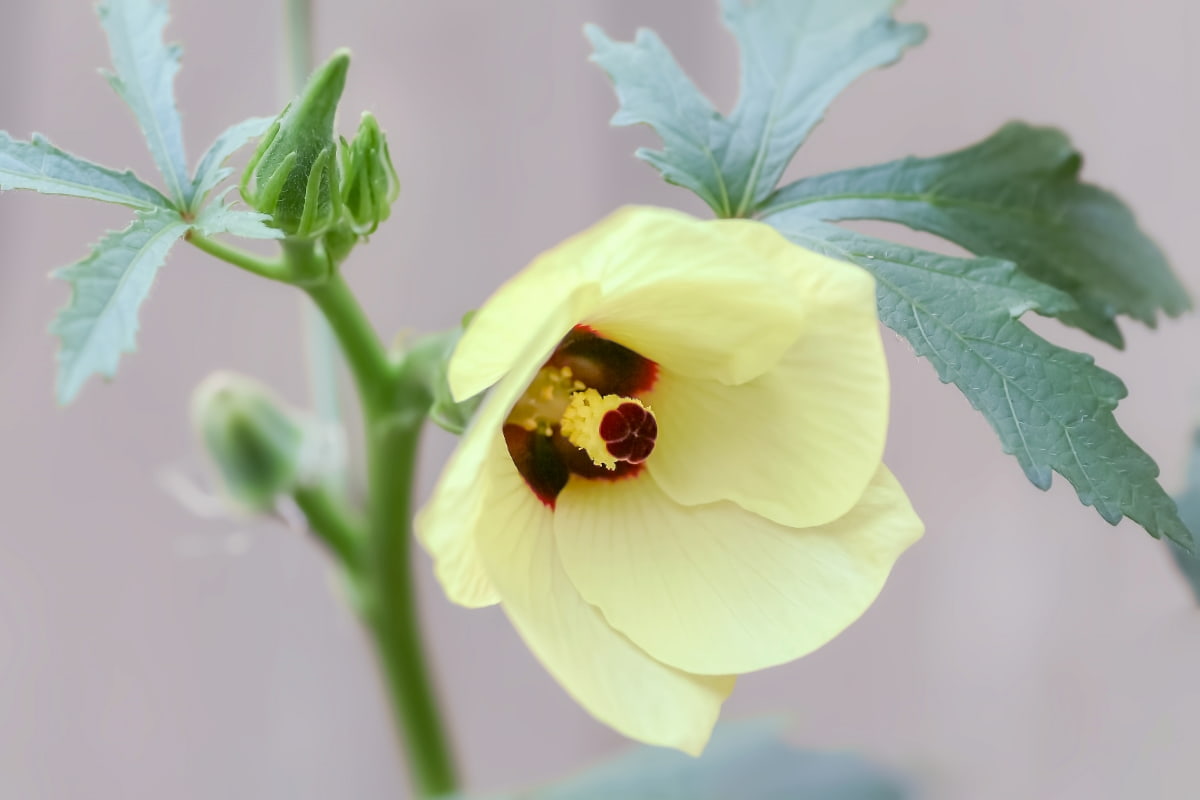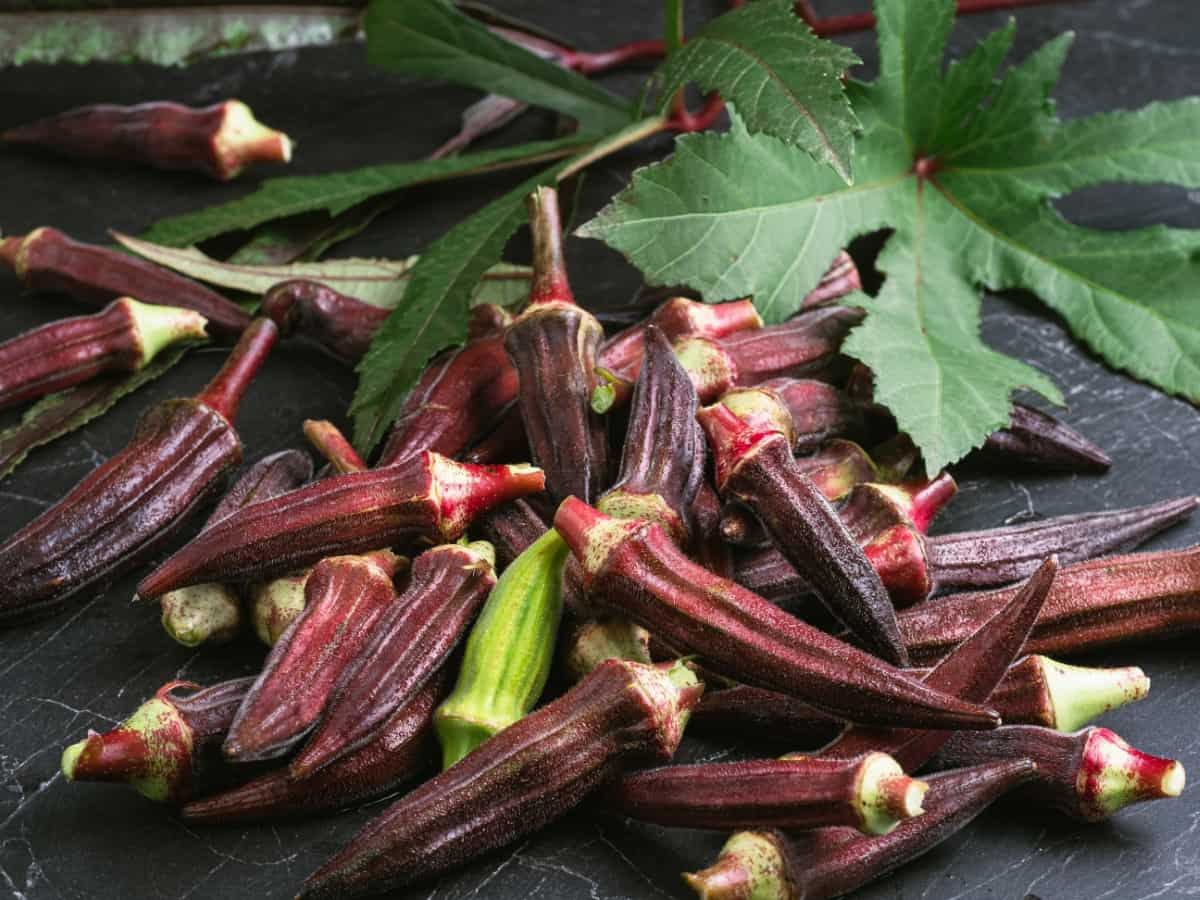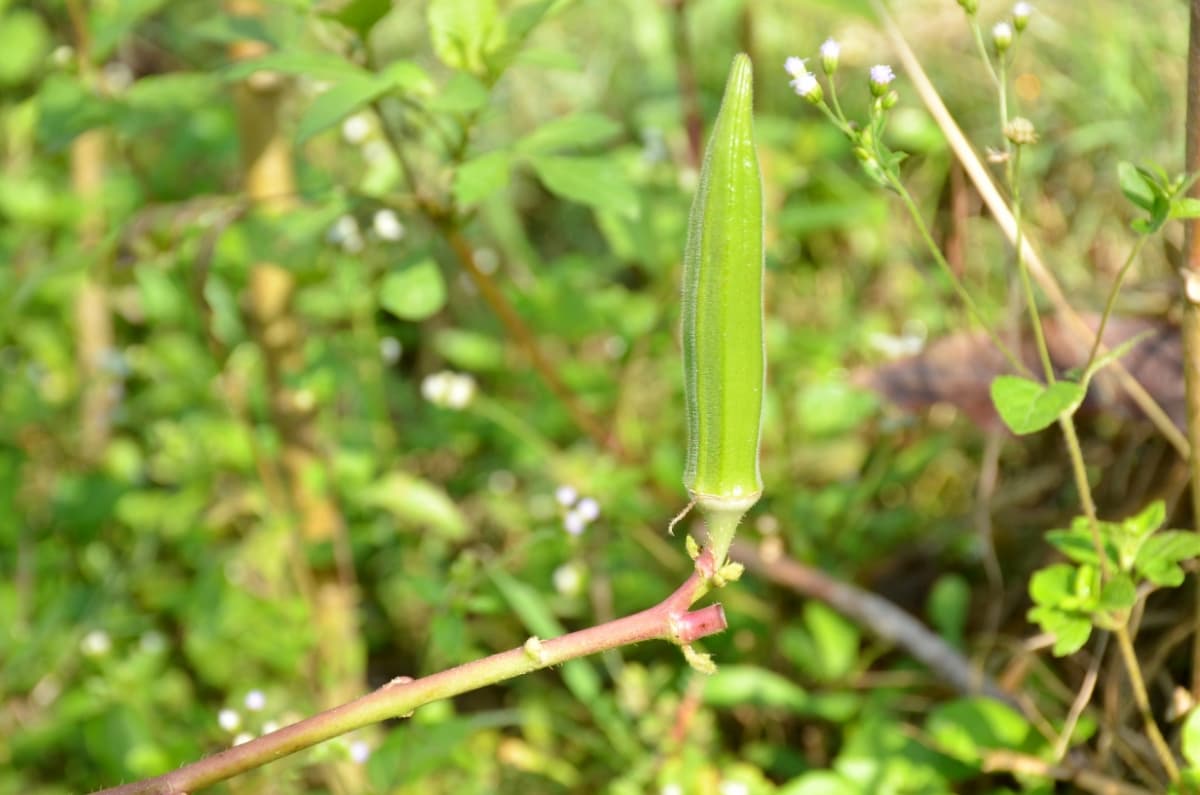Okra bacterial wilt is a common problem faced by gardeners and farmers alike. Controlling Okra Bacterial Wilt naturally helps maintain biodiversity in your garden. The significant benefit of using natural methods for controlling this disease is that it eliminates the need for harmful chemicals or pesticides. By opting for organic treatments, you protect your crops, safeguard the environment, and promote healthier soil.

How to Control Okra Bacterial Wilt Naturally
How to Get Rid of Okra Bacterial Wilt with Natural Fungicides
Okra bacterial wilt can be a frustrating problem for gardeners, but natural solutions are available to help control and manage this disease. The effective method is using natural fungicides to combat the bacteria that cause wilt in Okra plants.
Neem oil has antifungal properties and can help prevent the spread of bacterial wilt in Okra plants. Copper helps protect plants against various fungal diseases, including bacterial wilt. Garlic extract is also known for its antimicrobial properties and can effectively control bacterial infections in Okra plants.
Organic Methods for Controlling Okra Bacterial Wilt
Crop rotation involves planting Okra in different locations each year. This helps break the disease cycle by preventing the buildup of bacteria in the soil. Resistant varieties of Okra have been bred to be less susceptible to bacterial wilt, making them an excellent choice for farmers and gardeners. Furthermore, practicing good plant hygiene can go a long way in controlling bacterial wilt naturally in Okra.
Removing infected plants promptly and disposing of them away from your growing area can help prevent the spread of bacteria. In addition, applying compost or well-rotted manure to improve soil health can enhance plant vigor and resistance against diseases like bacterial wilt. Organic fertilizers rich in nutrients can also play a pivotal role in boosting plant immunity.
Using Companion Planting to Control Okra Bacterial Wilt
Companion planting is a natural way to control Okra Bacterial Wilt in your garden. By strategically pairing certain plants together, you can create a balanced ecosystem that deters pests and promotes healthy growth. Marigolds have natural pest-repellent properties and can help deter insects that spread bacterial wilt.
Basil adds flavor to your dishes and repels harmful insects like aphids and whiteflies, known carriers of bacterial wilt. Planting basil near your Okra helps protect it from infestation. Additionally, interplanting with onions or garlic can be beneficial in controlling bacterial wilt. These pungent plants emit strong odors that repel many pests, including those responsible for spreading the disease.
Natural Pest Control Methods for Okra Bacterial Wilt
Introducing beneficial insects into your garden is the best natural pest control method in Okra. Lacewings, ladybugs, and parasitic wasps are all examples of beneficial insects that feed on aphids and caterpillars. Additionally, practicing crop rotation can help reduce the risk of bacterial wilt in your Okra plants. By rotating crops every season, you disrupt the pest’s life cycle that may be present in the soil. Utilizing physical barriers such as row covers or netting can prevent insects from reaching your Okra plants in the first place.
In case you missed it: How to Control Okra Powdery Mildew Naturally: How to Get Rid of This with Natural and Organic Treatment

Okra Bacterial Wilt Management through Soil Amendments
Soil amendments are beneficial additions to the soil that help improve its structure and fertility. Compost contains organic matter that enhances the soil’s health and promotes beneficial microbial activity. This helps create an environment where disease-causing bacteria cannot thrive. Incorporating organic matter like cover crops or green manure into your soil can also help suppress Okra Bacterial Wilt. These practices increase biodiversity in the soil, creating conditions that are unfavorable for disease-causing bacteria.
The Role of Beneficial Microorganisms in Controlling Okra Bacterial Wilt
These organisms, such as bacteria and fungi, can help suppress the growth of harmful pathogens that cause bacterial wilt in Okra plants. The main way beneficial microorganisms control bacterial wilt is through competition. They occupy the same ecological niche as the pathogenic bacteria, competing for resources like nutrients and space. This limits the availability of resources for the harmful bacteria, reducing their ability to multiply and spread.
Another way these microorganisms combat bacterial wilt is by producing antimicrobial compounds. Some beneficial bacteria and fungi can produce substances that inhibit or kill pathogenic bacteria. These natural antibiotics serve as a defense mechanism against harmful pathogens, preventing them from infecting Okra plants.
Natural Fungicides for Controlling Okra Bacterial Wilt
Copper has long been recognized as a potent antimicrobial agent and can help control bacterial wilt by inhibiting its growth. Following the recommended dosage when using copper-based sprays is important, as excessive use may lead to plant toxicity. Garlic extract is another natural option that can help suppress bacterial wilt. To make a garlic extract spray, crush garlic cloves and steep them in water overnight before straining any solids.
Okra Bacterial Wilt Prevention through Proper Watering
It is essential to provide adequate moisture for the plants without overwatering them. Overly wet soil creates favorable conditions for bacterial growth, which increases the risk of infection. To prevent bacterial wilt, it is recommended to water the Okra plants deeply but infrequently.
In case you missed it: How to Control Okra Leafhoppers Naturally: How to Get Rid of Them with Natural and Organic Treatment

Water your Okra plants early in the morning so that any excess moisture on the foliage has ample time to dry before evening when temperatures drop. In addition to following these watering practices, monitoring your plants closely for any signs or symptoms of bacterial wilt is essential. Early detection allows for prompt action and minimizes the further spread of the disease.
The Importance of Sanitation in Controlling Okra Bacterial Wilt
You can effectively minimize the infection and protect your Okra plants by practicing proper sanitation measures. An important aspect of sanitation is cleaning and disinfecting gardening tools regularly. Then, you can eliminate any potential sources of contamination and reduce the likelihood of spreading bacterial wilt.
Maintaining clean growing conditions is vital for controlling Okra Bacterial Wilt as well. This means regularly removing weeds that may act as hosts for the disease-causing bacteria. Keeping your garden free from excessive moisture or standing water can help prevent bacterial growth.
Integrated Pest Management for Okra Bacterial Wilt
Integrated Pest Management (IPM) involves using multiple strategies that work together to minimize pest damage while minimizing harm to the environment. IPM for Okra Bacterial Wilt includes cultural, biological, and chemical control methods. Cultural practices play a crucial role in managing this disease. Crop rotation can help break the cycle of bacterial wilt by planting non-susceptible crops in infected areas. Proper sanitation can also prevent the spread of bacteria.
Biological control agents are another important aspect of IPM for Okra Bacterial Wilt. Beneficial microorganisms like Bacillus subtilis can be applied to the soil to suppress pathogenic bacteria and enhance plant health. Chemical controls should be used as a last resort in IPM for Okra Bacterial Wilt. Organic fungicides containing copper or other approved ingredients can be used according to label instructions.
Frequently Asked Questions on Okra Bacterial Wilt
What is Okra Bacterial Wilt?
Okra bacterial wilt is a disease that affects the vascular system of Okra plants. It can cause wilting of leaves and stems, as well as yellowing and browning of affected tissues.
How Does Bacterial Wilt Spread in Okra Plants?
The bacteria that cause Okra bacterial wilt can survive in soil for long periods. They enter the plant through wounds or natural openings, such as stomata on leaves or roots.
Can I Prevent Bacterial Wilt in Okra Plants?
Prevention is crucial when it comes to controlling Okra bacterial wilt naturally. Start by selecting disease-resistant varieties of Okra for planting. Rotate your crops regularly to break the disease cycle and avoid planting susceptible crops in previously affected areas.
Are There Any Cultural Practices That Help to Control Bacterial Wilt?
Yes. Practicing good sanitation in your garden is essential for preventing the spread of bacterial wilt in Okra. Remove any diseased plants immediately, along with their surrounding soil, to eliminate potential sources of infection.
In case you missed it: How to Control Okra Fungal Diseases Naturally: How to Get Rid of Them with Natural and Organic Treatment

Conclusion
Okra Bacterial Wilt is a common disease that can wreak havoc on your Okra plants. It is caused by a bacterium called Pseudomonas solanacearum, which infects the plant’s vascular system and ultimately leads to wilting and death. This disease can devastate farmers and gardeners relying on Okra as a staple crop. Controlling Bacterial Wilt naturally is essential to protect your Okra plants without resorting to harmful chemicals. This approach promotes plant health and resilience against diseases like Okra bacterial wilt.
- Deworming Schedule for Dogs/Puppies: A Beginners Guide
- How to Prevent and Control Parasites in Goats
- Beneficial Insects in Pest Management
- Natural Solutions for Pest Control in Flower Gardens
- Types of Fungicides Used in Agriculture
- Common Issues in the Fruit Development Stage of Pomegranate Farming
- Fruit Development Issues in Papaya: Easy Solutions and Treatment
- Soil-Borne Diseases and How to Protect Your Plants
- Practices to Prevent Disease Spread in the Garden